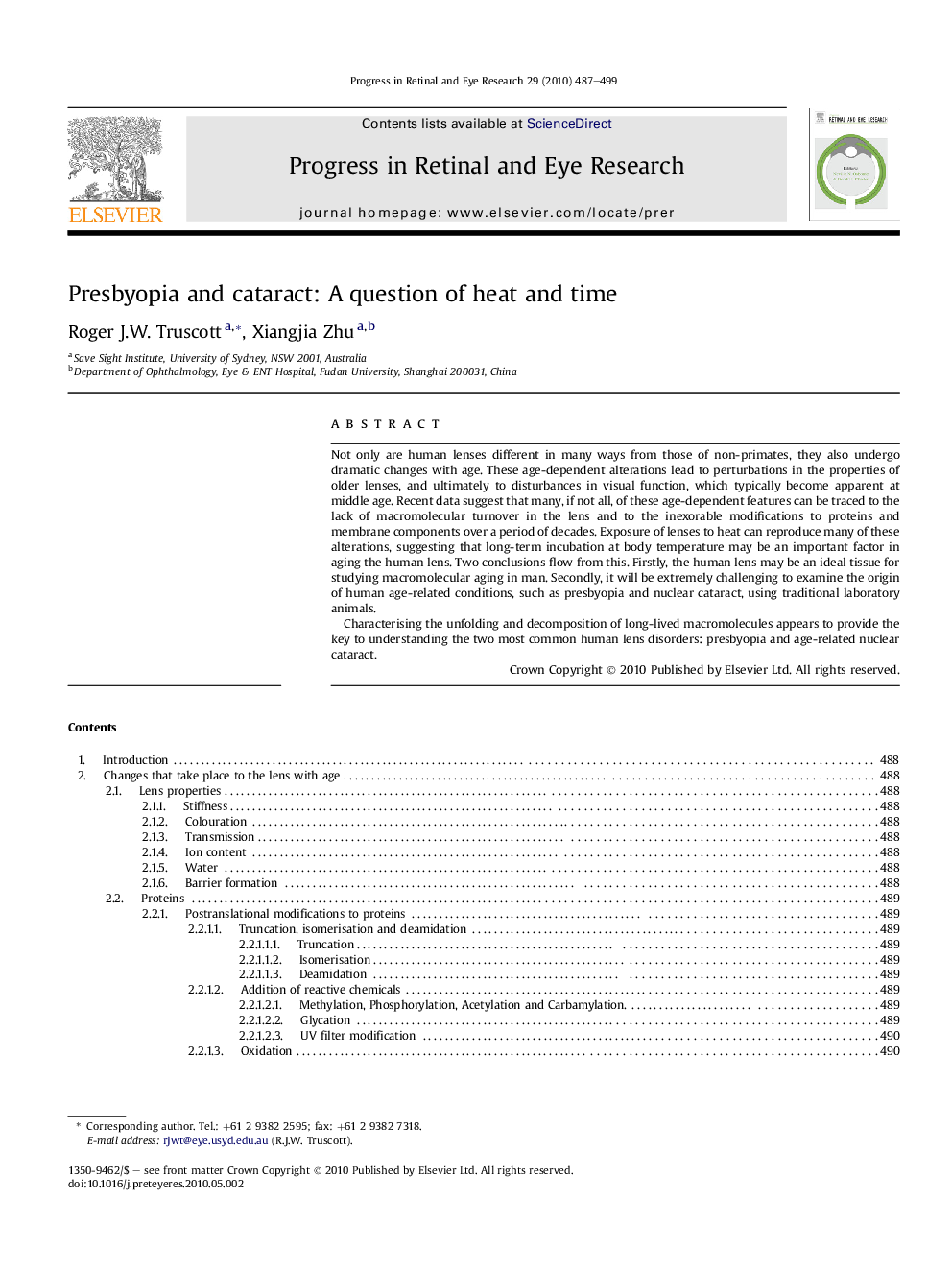| کد مقاله | کد نشریه | سال انتشار | مقاله انگلیسی | نسخه تمام متن |
|---|---|---|---|---|
| 4032043 | 1262938 | 2010 | 13 صفحه PDF | دانلود رایگان |

Not only are human lenses different in many ways from those of non-primates, they also undergo dramatic changes with age. These age-dependent alterations lead to perturbations in the properties of older lenses, and ultimately to disturbances in visual function, which typically become apparent at middle age. Recent data suggest that many, if not all, of these age-dependent features can be traced to the lack of macromolecular turnover in the lens and to the inexorable modifications to proteins and membrane components over a period of decades. Exposure of lenses to heat can reproduce many of these alterations, suggesting that long-term incubation at body temperature may be an important factor in aging the human lens. Two conclusions flow from this. Firstly, the human lens may be an ideal tissue for studying macromolecular aging in man. Secondly, it will be extremely challenging to examine the origin of human age-related conditions, such as presbyopia and nuclear cataract, using traditional laboratory animals.Characterising the unfolding and decomposition of long-lived macromolecules appears to provide the key to understanding the two most common human lens disorders: presbyopia and age-related nuclear cataract.
Journal: Progress in Retinal and Eye Research - Volume 29, Issue 6, November 2010, Pages 487–499